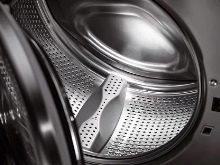All about linon fabric
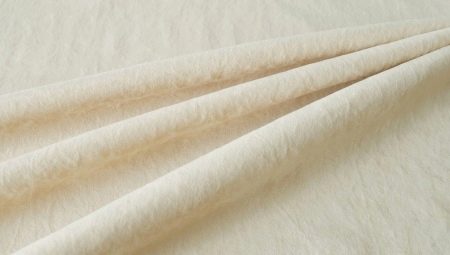
Linon is an unusual name for the fabric for the ear. By analogy with other similar words (nylon, nylon), it seems that in this case, too, we are talking about some kind of new canvas made of synthetic fibers. But this is not at all the case.
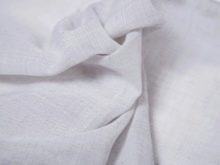
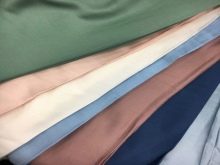

Description
Linon is a natural fabric made from the finest fibers of flax or cotton. It is a variety of cambric, which is why it is sometimes called linobatiste or linon baptiste. For manufacturing, the highest quality raw materials are used, very fine workmanship. Linen and cotton are additionally bleached before spinning, so the fabric is distinguished by a radiant whiteness. The thickness of the fibers does not exceed 0.1 mm, and the density index is in the range of 72-120 units.
Linon cloth is smooth, silky, light. It is very thin, but not transparent. Unlike regular cambric, it has a glossy surface reminiscent of satin. This effect is achieved due to a special method of making yarns using the wet spinning method, while satin fabric is formed due to a special weaving of fibers.
Belongs to the category of elite textiles. In the modern assortment, it is included in the goods of the high price segment.
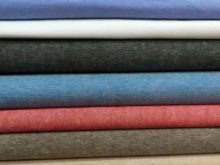

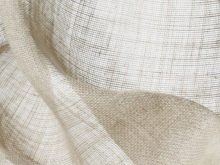
History
Cotton and linen are natural fibers from which fabrics were made thousands of years ago. But as technology has advanced, so have the ways in which fiber is produced. After the invention of the wet spinning technique, which makes it possible to obtain very thin and at the same time strong threads, a new material with unprecedented properties appeared - linon. The first mention of this material - linobatista, as it was then called, is attributed by fashion historians to the second half of the 15th century. It was used for sewing underwear, blouses and accessories.When crisp white overhead collars with lace and sewing came into fashion, the demand for this delicate material increased, despite its high cost. The possession of such an accessory was a sign of good taste and financial well-being.
After collars ceased to be an integral part of a suit, handkerchiefs were made from thin snow-white fabric. They were lavishly decorated with embroidery, turning them into real works of art. Now linen scarves have become exhibits in fashion museums. Dresses made of this material, decorated with cut-through embroidery and lace, were gladly worn by Josephine, the wife of Napoleon Bonaparte. Thanks to her, these summer outfits have become very popular.
Especially famous were the fabrics made by craftsmen from Alsace, so the most expensive type of linon was called Alsatian.
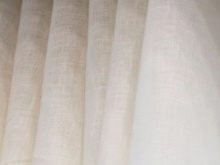

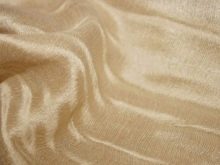
Basic properties
Thanks to its completely natural composition, this fine fabric has all the advantages of linen or cotton.
- Hypoallergenic. Does not cause irritation in contact with skin.
- Air permeability. The fabric "breathes" without hindering air circulation and heat exchange. Therefore, it is not hot in it in summer, and its underwear is comfortable even in the cold season.
- Hygroscopicity. It is impossible to sweat in linon products. They perfectly absorb moisture and dry almost instantly due to the fact that the fabric is very thin.
- Strength. Despite the very fine texture of the fibers, they are highly resistant to tearing and abrasion. Therefore, products made from such fabric are strong and durable.
- Density. Cotton and linen threads are elastic, but quickly return to their original shape. Thanks to this, the linen cloth keeps its shape perfectly.
- Practicality. Products made from such material do not require special care. Despite their fine texture, they can be machine washed and bleached. No special conditions are required for drying.
It is believed that linen sheets neutralize electrical discharges that occur when human skin is rubbed against bed linen. Therefore, sleeping on such a bed is useful for strengthening the nervous system, stimulating blood circulation and fighting skin diseases.
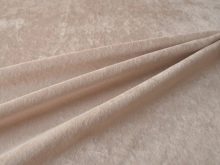
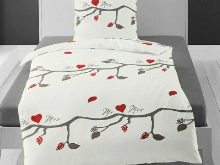
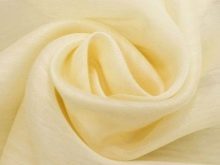
With such obvious advantages, linon has a number of features that must be taken into account in order not to be disappointed in the choice of this canvas.
- The fabric may shrink a lot after the first wash. Therefore, experienced craftsmen wash the linen before cutting the garment. And when buying a ready-made dress, you should choose a product that is 1-2 sizes larger.
- An overdried canvas is difficult to smooth out. Products made from this fabric are best heat treated in a slightly damp state. If you try to artificially moisturize dry linon, it can form folds and wrinkles under the iron, which are difficult to get rid of.
- Maximum number of machine washesafter which the fabric completely retains its qualities and appearance, no more than 70. After that, it will be more and more difficult to maintain a shiny white color and a smooth surface with each wash.
One of the obvious disadvantages of this elite environmentally friendly fabric is its high price. This is due to the fact that some of the technological operations in the process of making linon are still performed manually.
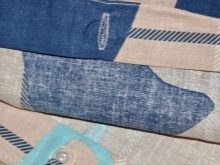
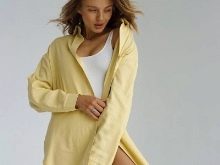
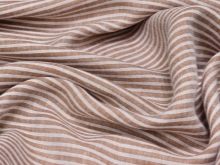
Applications
As it was several centuries ago, this thin fabric is used to create coupon sewing. The fabric is suitable for making elegant accessories and decorative textiles - scarves, napkins, capes, collars. Its performance properties make linon an excellent alternative to flannel when sewing children's clothing. The thin and delicate fabric is ideal for the delicate skin of babies. Many babies in their first hours of life are dressed in undershirts and wrapped in diapers made of linon. Due to the high hygroscopicity of the tissue, the risk of diaper rash and skin irritation is reduced to zero.
This material is also well suited for bedding. Sheets made of fine fabric are recommended for cots. These kits are recommended for allergy sufferers, pregnant women and people with increased sweating. Many housewives cherish elegant linen bedding sets with sewing for special occasions or purchase them as a gift for a celebration. And also in many houses, festive tables are covered with linon tablecloths or served with beautiful embroidered linen napkins from this fabric. Souvenir textiles are also produced from this material. Linon is perfect for sewing light summer clothes for men, women and children. Products made from this fabric look elegant and noble, very practical and comfortable.
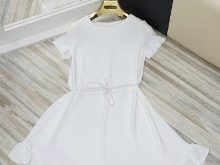

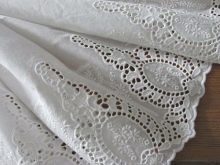
Care rules
There are no special rules for caring for products made from this natural fabric. It is unattractive to moths and linen mites, so no preventive measures are required to protect the linen cloth from pests. Suitable for hand and machine wash in hot water. If possible, boiling should be avoided as it will shorten the life of the product. But in case of emergency, you can apply washing at an elevated temperature and apply bleaching agents. Linon fabric, like other natural fabrics, is best washed separately from woolen and synthetic items. This will preserve the delicate texture of the canvas. Separate washing of colored and white linen is a general rule for the care of any textile, linon is no exception.
Like all linen and cotton fabrics, you should put things in the closet for storage only after they have completely dried, otherwise mold may form in the wet folds. It is better to store bed linen and home textiles rolled up in rolls, so folds and creases will not form at the folds of the fabric. Then it is very difficult to smooth them out. The same applies to linon clothing. It is more practical to store it flat on a hanger, and if this is not possible, in the form of a loose roll. Linon products are elegant and practical. They are able to give a special charm to the image of a person or an interior. For many years, products made from such a canvas have been synonymous with luxury and beauty.
For several centuries, these delicate fabrics were worthy of the wardrobe and bedroom of royalty and noblemen. Now they are available to anyone who prefers quality, beauty and environmental friendliness.

